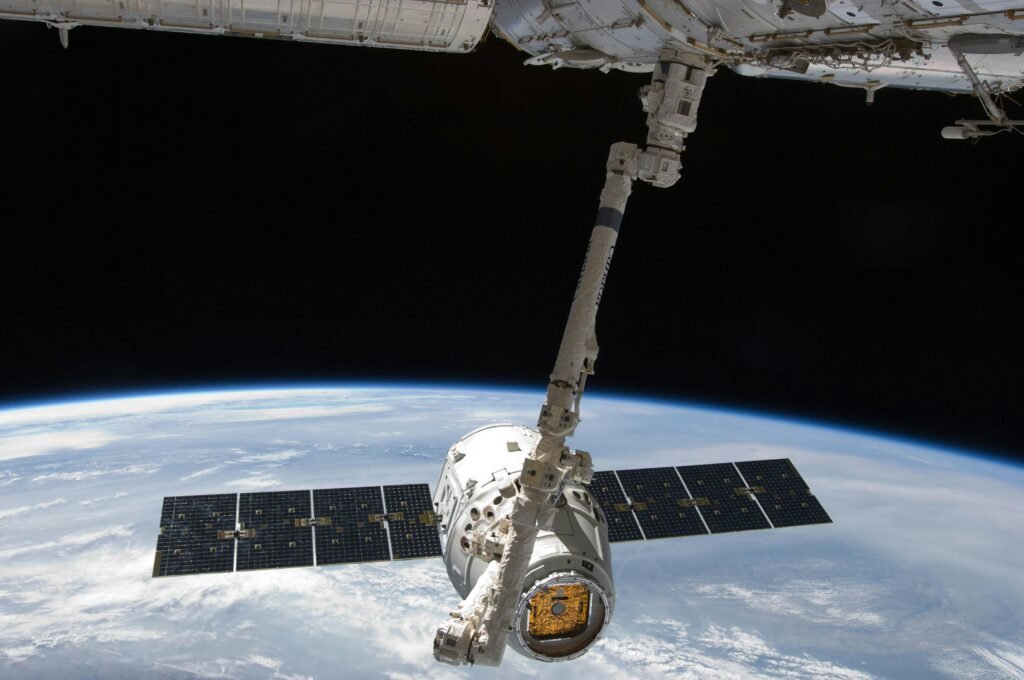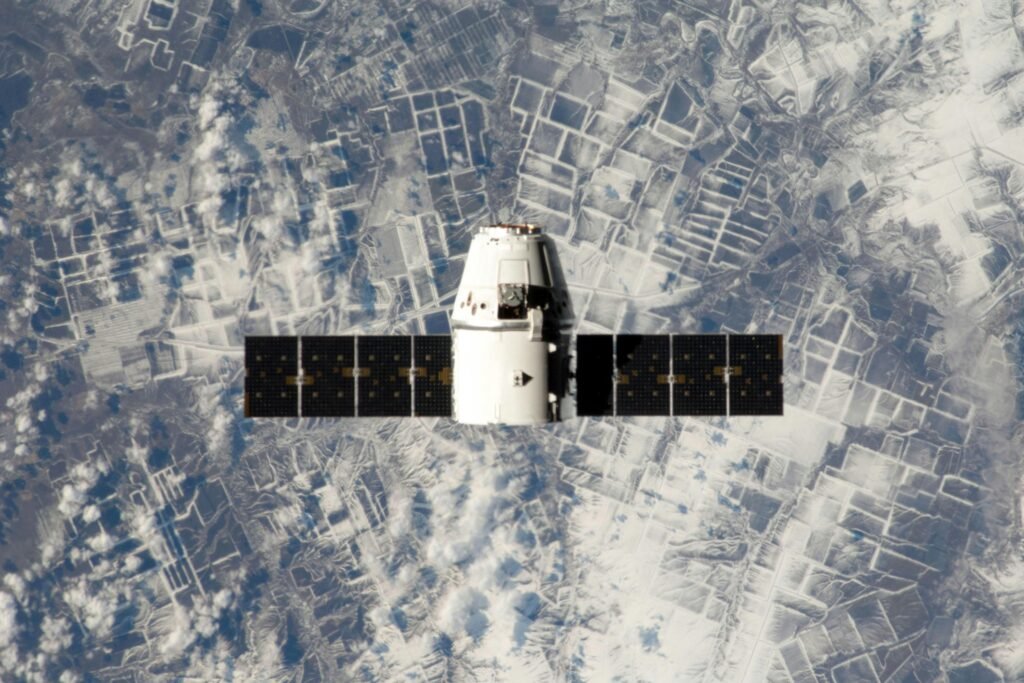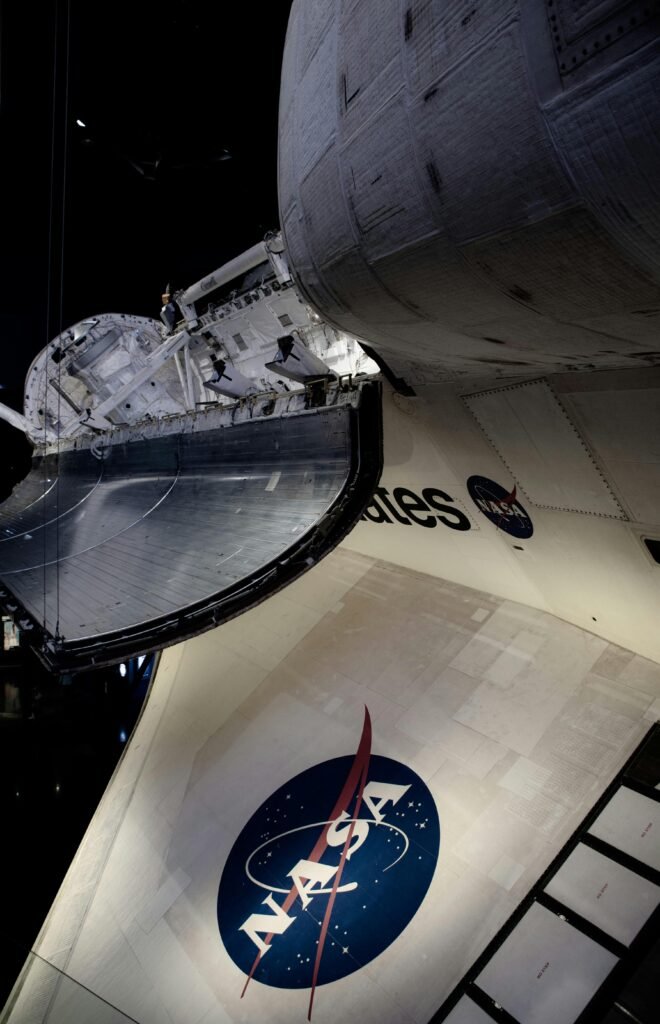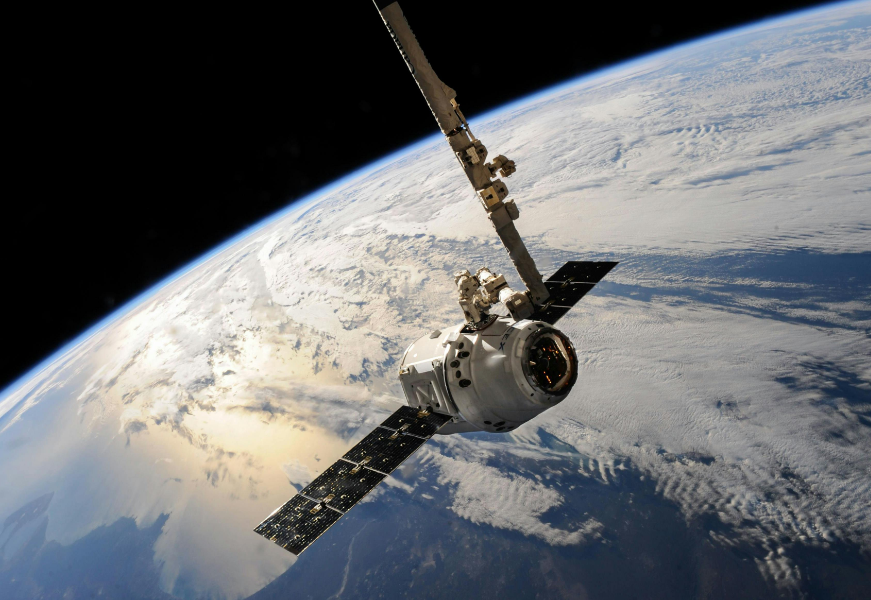In the rapidly evolving world of space exploration, a new concept is gaining attention: a spacecraft that never enters Earth's atmosphere. Traditionally, spacecraft are launched from Earth, pass through the atmosphere, and then return. But what if we could build a Spacecraft that stays in space permanently and never needs to travel through the thick, fuel-consuming layers of Earth’s atmosphere?
With NASA and private companies in the US and UK space sectors driving innovation, the design of such spacecraft is becoming a real possibility. These specialized vehicles have the potential to revolutionize space travel, satellite missions, and scientific research.
A Spacecraft That Never Enters the Atmosphere

Traditional spacecraft need to launch from Earth and push through the atmosphere, which requires massive amounts of fuel and power. But a Spacecraft that never enters the atmosphere would stay in orbit or even deeper in space, ready to perform missions, transport cargo, or assist in exploration without ever re-entering Earth’s gravity well.
This spacecraft could be assembled or launched from space stations, lunar bases, or orbital platforms, eliminating the need to deal with drag, heat shields, and the atmospheric stress of Earth launches or re-entries.
How Would It Work?

While the idea sounds futuristic, the foundation is already being built. Here's how such a system could operate:
1. Orbital Construction and Launch
Instead of launching a complete spacecraft from Earth, components can be launched separately and assembled in orbit. Robotic arms, AI systems, or astronauts could piece together the spacecraft in space.
2. Space Elevators and Tugs
Although space elevators are still in early research stages, space tugs—robotic spacecraft that move objects in orbit—are already in use. These could help move parts or fuel between Earth orbit and operational spacecraft.
3. Docking with Space Stations
Spacecraft would dock with platforms like NASA’s Lunar Gateway or future orbital stations for refueling, repairs, or cargo loading.
4. Continuous Operation
Once in space, the spacecraft would remain active for years or even decades, moving between locations like the Moon, Mars, or satellites, without ever touching Earth.
Advantages of This Type of Spacecraft
Building a spacecraft that never enters the atmosphere offers many exciting benefits:
- Fuel Efficiency: Escaping Earth’s gravity takes enormous energy. If the spacecraft is already in space, fuel requirements drop dramatically.
- Longer Lifespan: No atmospheric friction means less wear and tear. A spacecraft could be used for decades with proper maintenance.
- Quick Deployment: Instead of launching a new rocket every time, we can quickly use a ready spacecraft in orbit.
- Supports Deep Space Missions: Ideal for missions to Mars, asteroids, or deep space, as it reduces the need to return to Earth between trips.
- Lower Launch Costs: This design could make space travel cheaper in the long term.
Design Considerations

Designing such a spacecraft requires a unique approach. Since it won’t experience atmospheric pressure or heat, its design can be lighter and more specialized. Key features may include:
- Solar Panels for Energy: In space, solar power is reliable and clean.
- Radiation Shielding: Without Earth’s atmosphere, protection from cosmic radiation is a must.
- Advanced Communication Systems: Constant connection with Earth or another spacecraft is necessary.
- Modular Design: Makes it easier to repair or upgrade while in orbit.
Challenges to Overcome
As exciting as the idea sounds, there are still several technical and financial challenges:
- High Initial Costs: Building and sending parts into space is still expensive.
- In-Space Assembly: Constructing or maintaining spacecraft in space needs advanced robotics and skilled astronauts.
- Space Debris Risk: Staying in orbit for years increases the chance of damage from space junk.
- Resupply Logistics: A spacecraft would need fuel, food, or tools, which still must be sent from Earth.
Real-World Examples and Progress
- NASA’s Lunar Gateway: A planned space station orbiting the Moon, which will serve as a launch pad for deeper space missions. Spacecraft connected to the Gateway may never need to return to Earth.
- SpaceX Starship: Though designed to return to Earth, it is also being adapted for extended space use, such as Mars trips, with the potential for in-space refueling.
- UK Spaceports: Efforts in the UK to build spaceports may eventually support orbital construction and launch of spacecraft that don’t enter Earth’s atmosphere.
Future of Space Travel
In the next 10 to 20 years, we may see modular spacecraft floating above Earth, always ready for a new mission. These vessels will make space travel faster, safer, and more routine.
The dream of sending people to Mars or building cities on the Moon may depend on these new spacecraft models. If such systems become available, people may even be able to buy spacecraft models for educational or simulation use, as part of a growing space culture.
Why This Is Important
A spacecraft that never enters the atmosphere changes everything. It opens the door to a true space economy, where factories, labs, and homes exist beyond Earth.
It also helps protect the environment, as fewer rockets launching from Earth means less pollution and a lower carbon impact. For students, scientists, and future astronauts who follow spacecraft tech news, this is one of the most exciting frontiers to watch.
Conclusion
Yes, building a spacecraft that never enters the atmosphere is possible, and we are closer than ever before. With the support of NASA, innovation from US and UK space tech, and constant research into new designs, we are entering a new age of space exploration.
Whether you're an engineer, investor, or someone who simply loves the stars, now is the time to look up and imagine what’s next.








